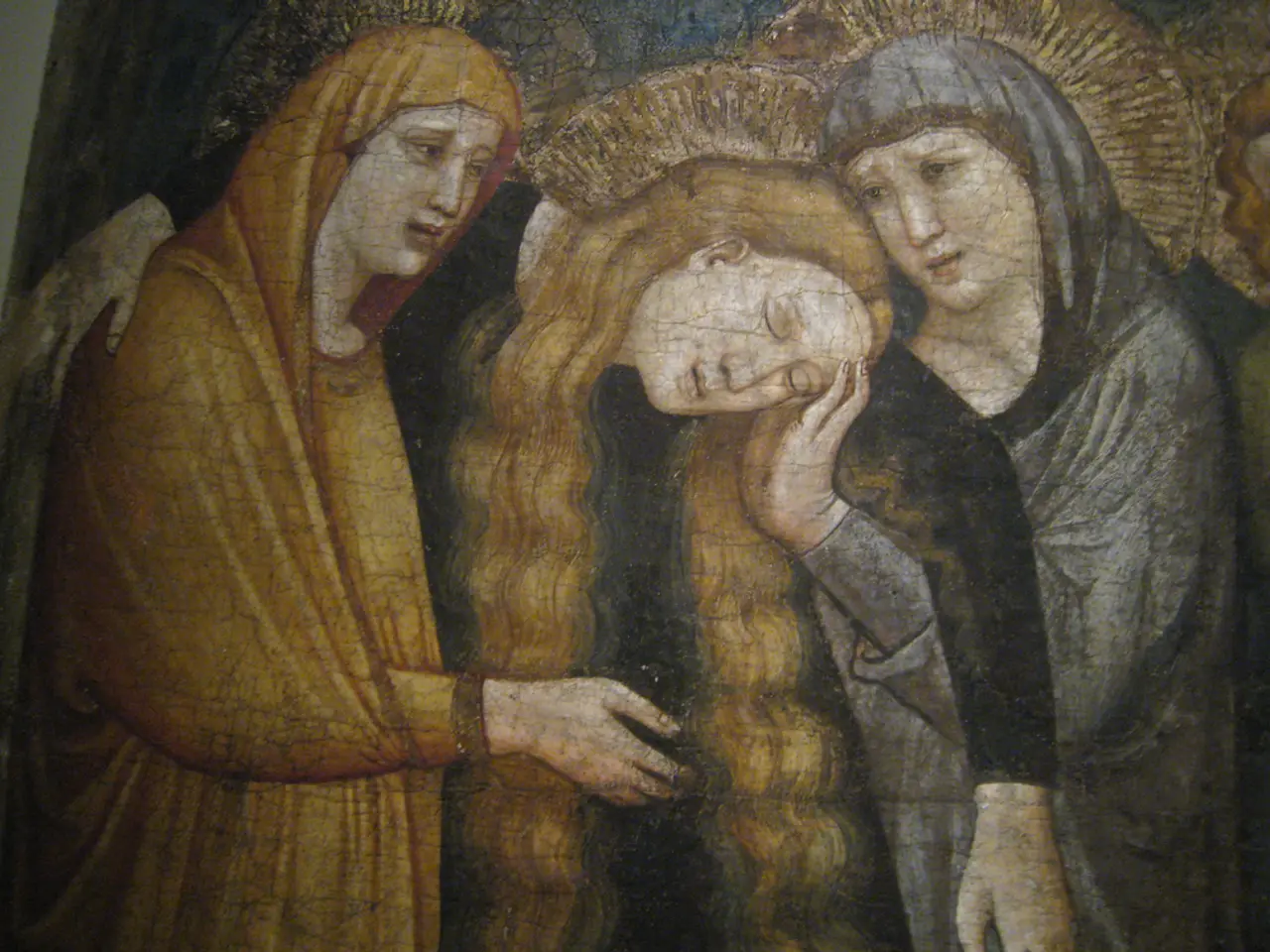AI Art Exhibition Closes at Nepal Fine Arts Academy
In a recent event at the Nepal Academy of Fine Arts (NAFA), author and journalist Ajay Sharma presented on Artificial Intelligence (AI) in Fine Arts. The discussion, attended by officials of the academy, artists, and journalists, highlighted the ongoing challenges and innovations in identifying AI-generated art.
Sharma's presentation delved into the background, development, and impact of AI in fine arts. He discussed the current standards and proposals for identifying AI-generated art, which might be relevant to such a presentation.
Current Standards and Proposals
One of the key points mentioned was the use of watermarking techniques by Google, such as SynthID, to identify AI-generated images. Researchers also employ supervised classifiers and few-shot prototypical networks to analyse visual features and identify AI-generated art. Contrastive Style Descriptors are another tool used to transfer style recognition from original artworks to AI-generated images.
However, these methods face challenges. For instance, current models struggle with identifying AI art when prompts are complex or invoke multiple artists. There's also the risk of false positives, where human-generated content is mistakenly flagged as AI-produced.
Market and Art Landscape
The AI art market is rapidly expanding, with visual art dominating the sector. Traditional art institutions are increasingly accepting AI-generated works, as seen in recent auctions. However, the use of AI art raises ethical and legal questions about authorship and ownership, necessitating clearer standards for AI-generated art identification.
Future Challenges and Caution
Keshav Raj Khanal, President of the Nepal Fine Arts Journalists Society (SOFAJ), commented on Sharma's presentation. He emphasized the need for caution regarding future challenges posed by the widespread use of AI. Chancellor of the Nepal Academy of Fine Arts (NAFA), Naradmani Hartamchhali, stated that the use of AI must be time-relevant.
Saurganga Darshandhari, Head of the Multidimensional and Other Creative Arts Department, stated that AI use is not meaningful without proper guidance. He added that the necessity of in-depth knowledge and awareness regarding the source of content is crucial.
Académicien Narendra Prasad Bhandari, Académicien Mukesh Malla, artist Diveshman Singh Pradhan, Académicien Krishnaraj Sarbahari, Ramesh Dahal, journalist Sunil Paudel, among others, shared their thoughts and questions on the presentation. Hartamchhali added that standards for identifying AI-generated art should be developed to provide recognition and space within fine arts.
Member Secretary Devendrakumar Kafle 'Thumkeli' noted that appropriate use of technologies, including AI, can yield positive outcomes. The discussion underscored the importance of continued dialogue and the development of clear standards for AI-generated art in the fine arts community.
It is essential to be aware of the ongoing research in technology, such as Google's watermarking techniques or supervised classifiers, for identifying AI-generated art. However, these methods may face challenges, like struggles with complex prompts or false positives, hence the need for improved standards.
In light of the rapidly expanding AI art market, it is crucial to develop time-relevant standards for AI-generated art identification to address questions regarding authorship and ownership within the fine arts community.



